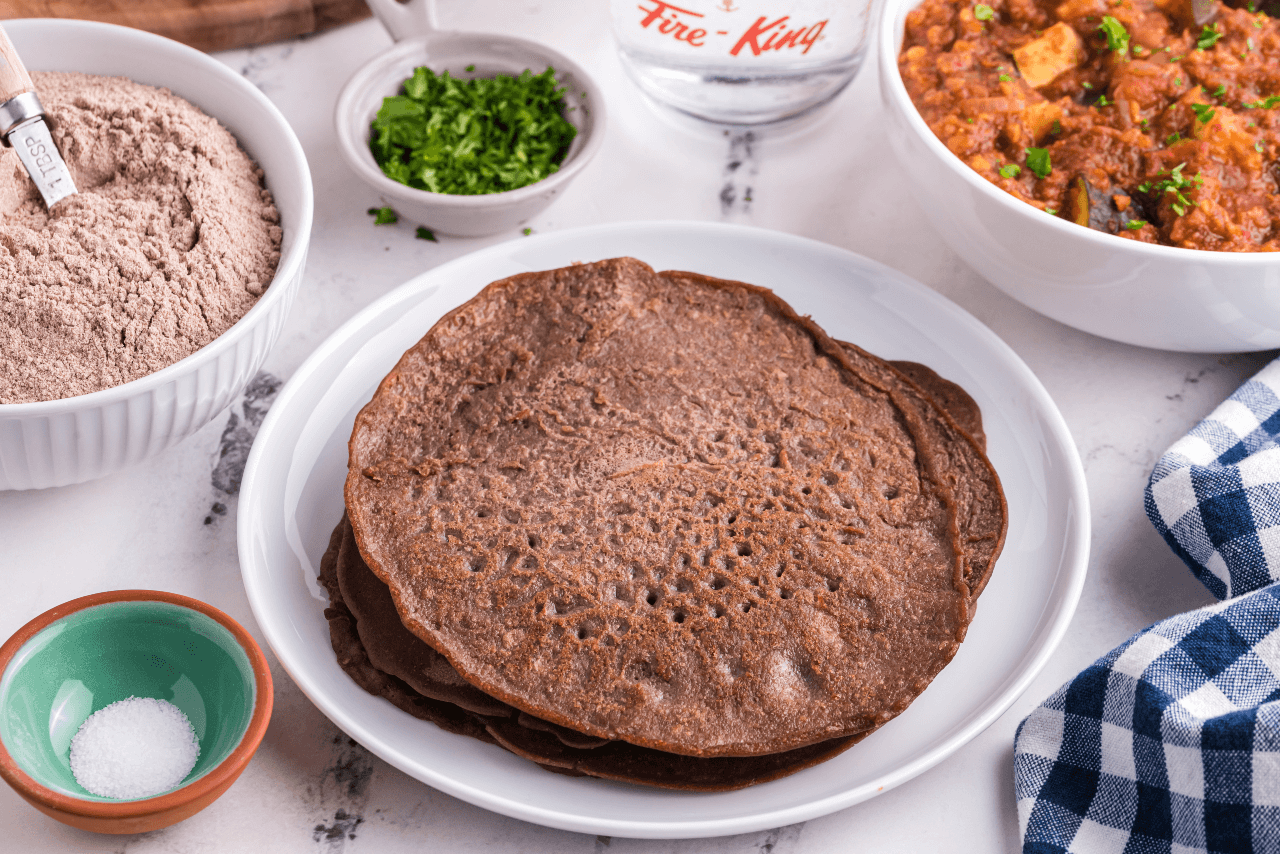Ingredients
Directions
Sift teff flour into a medium sized glass bowl.
Slowly add the water while you’re mixing with a wooden spoon or silicone spatula (don’t use metal as it’ll negatively affect the fermentation). The consistency should be like a runny pancake or thicker than a crepe (between a pancake and crepe consistency).
Cover the bowl with a towel and let it sit at room temperature for 32–48 hours (almost two full days for fermentation and it will depend on your atmospheric temperature and humidity). At the end of fermentation, it should smell sour.
There will be an off-color foam on top after it ferments. Skim this off the top with a spatula and discard.
Stir in the salt.
Lightly oil a stove top pan, wiping any excess droplets of oil with a paper towel. Heat on medium heat.
Pour the injera batter on top and either move your pan around so it spreads out or use a spatula to thin it out, slightly thicker than a crepe. You’ll most likely have to cook one at a time. Cook until the edges start to brown, about a minute, then flip. You should get approximately eight 6” pieces of injera bread. Set each one aside on a plate as you make the remaining.
Serve with your favorite Ethiopian food!
Chef's Notes
Substitutions
Try substituting half of the teff flour with another flour of your choice like rice or oat flour.
Fermentation
How long you need to ferment the bread will depend on your ambient temperature and humidity. Mine fermented well at 40 hours (I knew by the foam at the top and sour aroma). If you live in a low humidity environment and the temperature is cooler, it may take 48 hours or more.
Storage
Store leftovers in an airtight container in the refrigerator for 5–7 days.
Ingredients
Directions
Sift teff flour into a medium sized glass bowl.
Slowly add the water while you’re mixing with a wooden spoon or silicone spatula (don’t use metal as it’ll negatively affect the fermentation). The consistency should be like a runny pancake or thicker than a crepe (between a pancake and crepe consistency).
Cover the bowl with a towel and let it sit at room temperature for 32–48 hours (almost two full days for fermentation and it will depend on your atmospheric temperature and humidity). At the end of fermentation, it should smell sour.
There will be an off-color foam on top after it ferments. Skim this off the top with a spatula and discard.
Stir in the salt.
Lightly oil a stove top pan, wiping any excess droplets of oil with a paper towel. Heat on medium heat.
Pour the injera batter on top and either move your pan around so it spreads out or use a spatula to thin it out, slightly thicker than a crepe. You’ll most likely have to cook one at a time. Cook until the edges start to brown, about a minute, then flip. You should get approximately eight 6” pieces of injera bread. Set each one aside on a plate as you make the remaining.
Serve with your favorite Ethiopian food!



